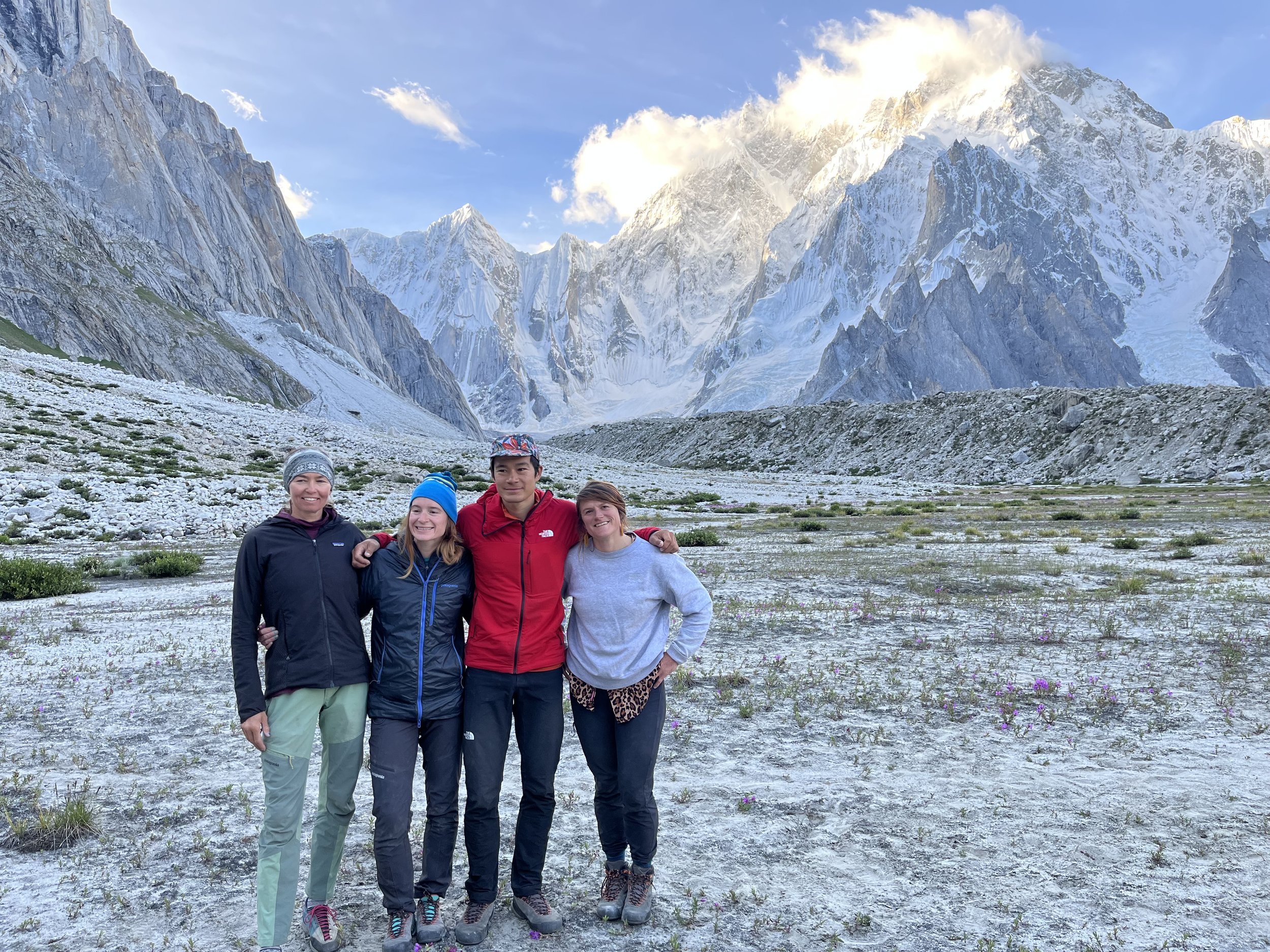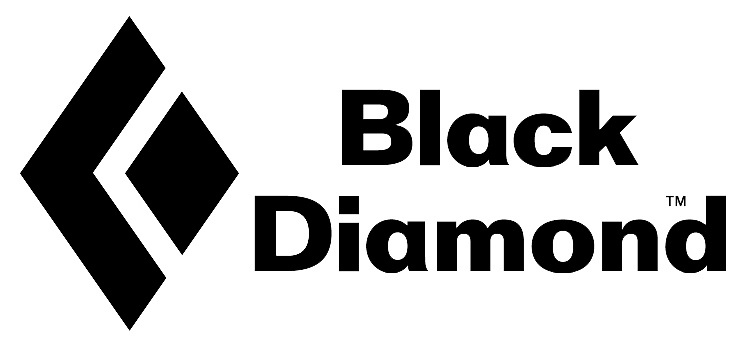PC: Lindsey Hamm
A Story from the Cutting Edge Grant and the McNeill-Nott Award
By: Sierra McGivney
In July of 2023, Lindsey Hamm, Rhiannon Williams, Stephanie Williams, and Thomas Bukowski traveled to the Charakusa Valley in the Karakoram to attempt routes on Naisa Brakk (~5,200m) and Farhod Brakk (~5,300m). To attempt these objectives, Hamm received the American Alpine Club's McNeill-Nott Award and $6,000 from the Cutting Edge Grant. This was Hamm’s second trip to the Charakusa Valley. In 2022, she, Dakota Walz, and Lane Mathis established a first ascent on a formation between Spansar Brakk and Naisa Brakk (which they named Ishaq Brakk): Pull Down the Sky (15 pitches, 5.11 R). In 2023, she defined success a little differently.
“I think there were a lot of lessons learned,” remarked Lindsey Hamm from a coffee shop in Moab. She's been enjoying climbing in the desert; today is her rest day.
She had returned from the Charakusa Valley a couple of months ago without accomplishing the FAs she had dreamed up. This year, her crew went in with two objectives, and they split up in two teams to make their respective attempts. But ultimately, the weather was against them, and it rained 22 of the 30 days they were in the valley.
PC: Lindsey Hamm
The team desperately wanted to climb, but the weather was a big factor. When they did attempt a line, they would climb for an hour, bivy, wait out the rain, and then climb. They were in this constant mode of stop-and-go that was not sustainable.
Hamm and Bukowski attempted a route on the Northeast Spur on Farhod Brakk. They were shut down due to objective hazard and need for potable water. The two had only planned for two or three days and ended up being out for about four days. Then bad weather moved in.
“I think it was a bad season for rock climbing,” said Hamm.
This was another lesson learned: Big-wall climbing is better later in the season. She chose to go in July because she wanted to attempt both alpine and rock objectives. The environment is so different from one peak to the next that you could attempt both alpine and rock objectives during this time of the year.
PC: Lindsey Hamm
“I'm really learning the place,” said Hamm. Hamm is an AMGA Certified Rock and Alpine Guide, and an Apprentice Ski Guide, but she believes there is always more to learn, especially in alpinism.
In addition, Hamm and another teammate dealt with altitude sickness. This was something new for Hamm. She had never experienced it to the extent she did on this trip. On one of the climbs, she was breathing heavily. She had to take a moment to feel everything and then “get her shit together.” According to Hamm, her group’s effort to help each other out when they were sick was a highlight of their climbing.
Hamm’s team wasn't the only group stifled by the rain. Base camp, which sits at 14,321 feet, became a hub of climbers waiting for good weather windows. Groups played volleyball together, hosted movie nights, and played Settlers of Catan. Hamm was very social; she went to other campsites, hung out with different people, and got to know everyone. She read, worked out, and cooked with the porters.
Hamm took it in stride—the trip wasn't a negative experience; things just weren't aligning. With each passing season, she is becoming more and more dialed. Last year, Hamm and Dakota Walz started a line, but they didn’t get to finish putting it up or cleaning it—they only completed one pitch. This year, Hamm got back on that first pitch with S. Williams, R. Williams, and Bukowski, and climbed five more pitches to link into the Southwest Ridge, first put up by Steve House, Marko Prezelj, and Vince Anderson in the early 2000. Their “sit-start” to the Southwest Ridge is called Stop Talking (six pitches, 5.12-). Their plan was to link into the Southwest Ridge and then break off into the west face and put up a new route, but once again, rain and thunder turned them around. Later, S. Williams and R. Williams attempted Stop Talking ground up, but were again foiled by rain.
On expeditions, climbing isn't the only focus for Hamm. She believes in having a positive impact on the local community. The team brought over school supplies for the Hushe Valley, which they distributed among three schools in the area. In addition, Hamm set up a GoFundMe that goes towards the Iqra Fund, which helps Pakistani women achieve their master’s degrees. Hamm and the team met some of the women who benefited from the fund. The team got to see their faces, hear their voices, and see how they lived. Facilitating and helping with these women’s education meant so much to Hamm.
“I think one of the biggest highlights was meeting those women,” said Hamm.
PC: Lindsey Hamm
She got to see many of the same porters and guides she worked with last year. They were as happy to see her as she was to see them. Despite the language barrier, the experience was like reuniting with old friends. She gave away a lot of her Rab equipment, including sleeping bags, to her porters and guides. It’s important for her to give back to the community that is helping her achieve her goals in the mountains.
“It [provided] so much validation about how much of the connection I built with people,” said Hamm.
Since returning to the United States, Hamm has been looking toward the future, analyzing what she can do better next time.
“I'm going back next summer,” said Hamm, with a big smile on her face. “I already told Jack Tackle.” Tackle chairs the AAC’s Cutting Edge Grant committee, which decides the fate of grant applications.
She will train hard and try her best to get funding without forcing anything. She has 170 lbs. of stashed gear waiting for her return. She's definitely going back. Right now, she is focusing on the next couple of months. Hamm is going through the IFMGA guide certification process—this season, she will take her final exam. She’s still processing this summer’s trip and reflecting on what she can do better next time. Most importantly, she’s living for today.















